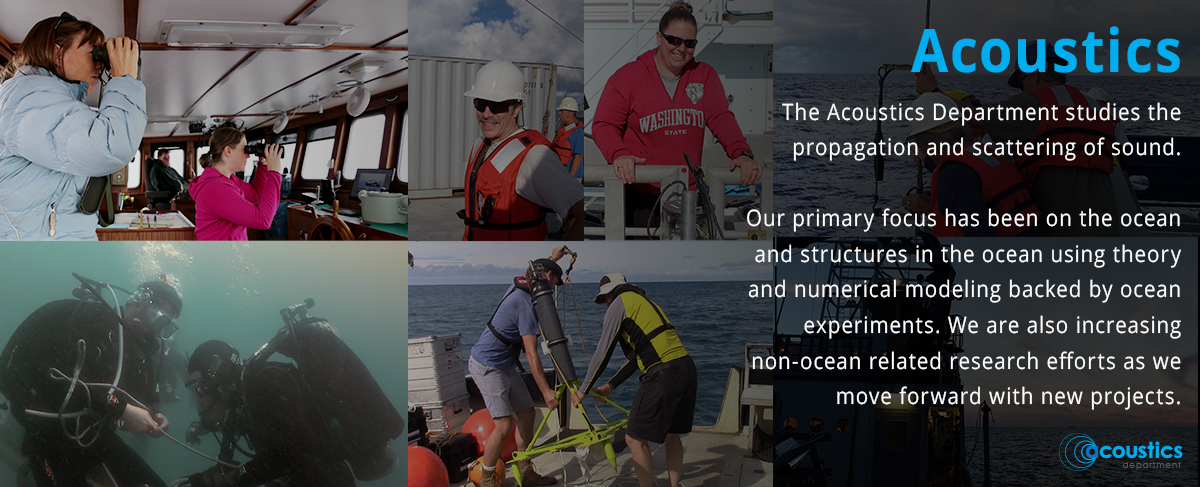
|
| Department Lead | |
|
|
|
| What We Do | Expertise | |||
|
Our research spans the frequency range from a few hertz to hundreds of kilohertz. We seek to understand and quantitatively predict propagation and scattering (the 'forward' problem). These predictions require detailed knowledge of the environment and the material properties of targets. To measure the ocean environment, we collaborate with physical, biological, and geophysical oceanographers. A forward problem in environmental acoustics asks, 'Given the environment, what is the received signal?' High fidelity forward models then allow us to address the inverse problem, 'Given recorded acoustic data, what is the environment?' Solving the forward problem requires a combination of physical understanding, theoretical development, and analytic and numerical modeling. The inverse problem offers many challenges as well, since it may be nonlinear, non-unique, and sensitive to uncertainty in environmental properties and the details of the acoustic data. |
|
|||
|
|
| Fruit Bats Use Tongue to Point Sonar Beams | SAMS: The Sediment Acoustic-speed Measurement System | First Research Deployment for IVAR | |||||

|

|

|
|||||
|
|
| Projects | All | Media Coverage | All | Publications | All | ||






